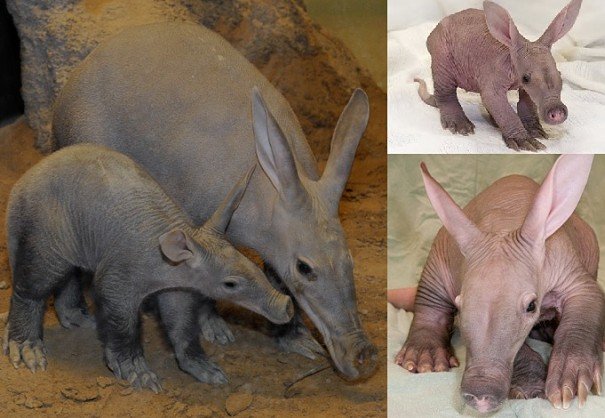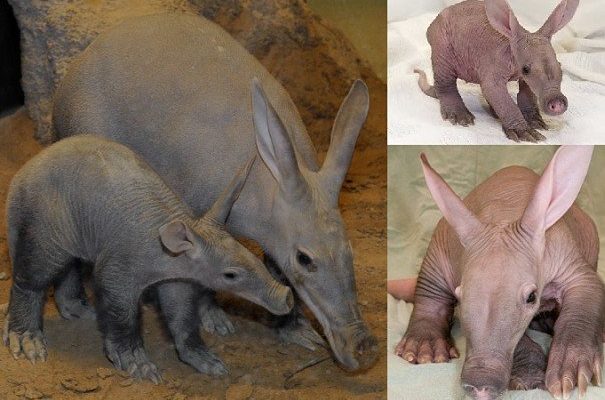
Let’s take a fun journey into the animal kingdom. We’ll explore ten animals that share characteristics with the aardvark, learning how they compare and what makes each of them special. It’s a bit like looking at a family tree—there are branches that fan out into surprises you might not expect. Ready to dive in?
1. Anteater: The Aardvark’s Lookalike
One of the most well-known animals that resemble the aardvark is the anteater. Just like the aardvark, anteaters have elongated snouts that help them reach into ant and termite mounds. However, there are some noticeable differences between the two. Anteaters have long, curved claws designed for digging, which are a bit more pronounced than those of the aardvark.
You might be surprised to learn that anteaters come in several sizes, from the giant anteater to the smaller Tamandua. Their fur, usually coarse and shaggy, sets them further apart from the aardvark’s smooth coat. So next time you spot one, remember to appreciate those distinct features!
Key Differences
- Claws: Anteaters have curved claws, while aardvarks have straighter ones.
- Fur Texture: Anteaters tend to have shaggy fur compared to the aardvark’s smooth skin.
- Size: Anteaters come in various sizes, while aardvarks have a more uniform body type.
2. Pangolin: The Armored Mammal
If you’re thinking about the aardvark’s role as an insect-eater, then the pangolin is another fascinating relative. Known for its scaly armor, the pangolin uses its specialized tongue to scoop up ants and termites, much like the aardvark. This makes it a close cousin in terms of diet, but visually, they couldn’t be more different!
Pangolins are covered in keratin scales, giving them a unique look reminiscent of a walking pinecone. When threatened, they can curl up, using their hard scales as protection. It’s a cool defense mechanism that the aardvark simply doesn’t have.
Key Differences
- Armor: Pangolins are covered in scales, while aardvarks are not.
- Defense Mechanism: Pangolins can curl up; aardvarks rely on speed to escape predators.
- Habitat: Pangolins are found in Asia and Africa, while aardvarks are exclusively African.
3. Opossum: The Marsupial Alternative
Now, let’s switch gears a bit and look at the opossum. While it doesn’t share the aardvark’s appearance, both animals are nocturnal and have similar diets that focus on insects and small creatures. The opossum’s prehensile tail and pouch for its young set it apart as a marsupial, which the aardvark will never claim to be.
Their adaptability to different environments is impressive—opossums can be found in urban areas, scavenging for food, while aardvarks typically stick to savannahs and grasslands. They both play a role in their ecosystems as pest controllers, but their paths diverge in appearance and lifestyle.
Key Differences
- Body Structure: Opossums have a pouch and are smaller, whereas aardvarks are larger and don’t have pouches.
- Habitat: Opossums thrive in urban settings while aardvarks prefer more rural habitats.
- Appearance: Opossums have fur and freckles; aardvarks have smooth skin and are generally stockier.
4. Hyrax: The Small Mammal with a Big Family
Ever heard of a hyrax? These small mammals might not share much in terms of diet with the aardvark, but they do have interesting similarities. Hyraxes are often mistaken for rodents because of their size and shape, but they are more closely related to elephants! Just like aardvarks, they have a stout build and can be found in rocky areas.
You’ll often find hyraxes lounging in groups, basking in the sun. While they primarily eat plants, some species will munch on insects too. Their social nature and strong family bonds contrast with the more solitary aardvark, but both play unique roles in their ecosystems.
Key Differences
- Diet: Hyraxes are primarily herbivores, while aardvarks are insectivores.
- Social Behavior: Hyraxes are social animals, unlike solitary aardvarks.
- Relation to Other Animals: Hyraxes are more closely related to elephants than aardvarks.
5. Armadillo: The Armor-Plated Wonder
Next up is the armadillo, an armored mammal that shares the aardvark’s penchant for digging. Like aardvarks, armadillos are insectivores, often searching for bugs and grubs in the soil. Their defining feature is their hard shell, which provides protection against predators—a quality the aardvark lacks.
While both animals dig into the ground, armadillos are equipped with a tougher exterior. They can curl into a ball to protect themselves, which is a nifty trick the aardvark can’t replicate.
Key Differences
- Armor: Armadillos have a protective shell, while aardvarks have smooth skin.
- Defense Mechanism: Armadillos can roll into a ball; aardvarks usually run away.
- Habitat Range: Armadillos are found in the Americas, while aardvarks are native to Africa.
6. Tenrec: The African Oddity
The tenrec is another intriguing animal from Africa that bears some similarities to the aardvark. Both are nocturnal and share a knack for eating insects, placing them in a similar niche within their ecosystems. Tenrecs have various body shapes and sizes, with some looking quite similar to hedgehogs.
Unlike aardvarks, tenrecs are covered in spines that act as a defense mechanism. Their diverse habitats range from forests to grasslands, highlighting their adaptability. While they both share the insect-eating lifestyle, their physical appearances vary significantly, making tenrecs a fascinating counterpart to aardvarks.
Key Differences
- Body Covering: Tenrecs have spines, while aardvarks have smooth skin.
- Diversity: Tenrecs come in various species with different adaptations, unlike the uniform aardvark.
- Physical Size: Tenrecs can be smaller and vary widely in size compared to aardvarks.
7. Porcupine: The Prickly Cousin
Porcupines are another animal that, like aardvarks, are found in a variety of habitats and focus on a diet that includes insects and plants. When you think of porcupines, you might picture their famous quills, which set them apart dramatically from the aardvark’s smooth skin.
Both animals are nocturnal and can often be spotted rummaging through the underbrush. The porcupine’s defense mechanism—quills—provides a stark contrast to the aardvark, which relies on its speed to escape danger.
Key Differences
- Defense: Porcupines use their quills for protection, while aardvarks have no specialized defenses.
- Dietary Preferences: Porcupines are primarily herbivores, while aardvarks feed mainly on insects.
- Physical Appearance: Porcupines are round and spiny, while aardvarks have a long, elongated shape.
8. Badger: The Burrowing Beast
When you look at badgers, you might notice some similarities in body shape and burrowing habits with the aardvark. Both animals love to dig! Badgers are known for their strong claws and create extensive burrows where they live and raise their young.
However, badgers are more social creatures than aardvarks. They often live in groups called ceti, while aardvarks prefer solitary lives. Their diet, while both carnivorous, also showcases differences—badgers enjoy snacks like small mammals, while aardvarks feast on ants and termites.
Key Differences
- Social Structure: Badgers live in groups, while aardvarks are solitary.
- Diet: Badgers have a broader diet, while aardvarks are specialized insectivores.
- Physical Traits: Badgers have a more compact body and distinct coloration compared to aardvarks.
9. Naked Mole-Rat: The Weird Wonder
The naked mole-rat is a curious creature that shares some burrowing habits with the aardvark. Though they might look drastically different—one is hairless and the other has smooth skin—they both dig extensive tunnels to create homes. Naked mole-rats have a social structure similar to that of bees, but aardvarks are lone wolves in the animal world.
Their plant-based diet contrasts with the aardvark’s insect diet, but they both play central roles in their ecosystems. Each has a unique approach to survival in their environments, making them fascinating to study.
Key Differences
- Appearance: Naked mole-rats lack fur, while aardvarks have smooth skin.
- Social Behavior: Naked mole-rats are social and live in colonies, unlike aardvarks.
- Diet: Naked mole-rats are primarily herbivorous, unlike the insectivorous aardvark.
10. Elephant: The Large Relatives
Finally, let’s consider elephants, who are actually aardvarks’ closest living relatives. When you look at their size difference, you might chuckle at the comparison, but both animals share certain anatomical features, such as tusks that serve different purposes. Elephants are more sociable and live in herds, while aardvarks are individualists.
Their diets differ vastly; elephants are primarily herbivores, munching on a variety of plants, whereas aardvarks focus on insects, particularly ants and termites. Still, their shared lineage makes them interesting to contrast and compare.
Key Differences
- Size: Elephants are massive compared to aardvarks.
- Social Structure: Elephants are social animals, while aardvarks are solitary.
- Diet: Elephants eat vegetation, while aardvarks consume insects.
In conclusion, exploring these ten animals similar to the aardvark can broaden your understanding of the diverse and fascinating world of wildlife. Each creature we’ve discussed has its traits, behaviors, and adaptations that make it unique. Next time you think of aardvarks, remember that they belong to a remarkable family of animals, each with its story to tell. Whether it’s the armored pangolin or the quirky hyrax, nature has an endless supply of surprises waiting for curious minds like yours!

